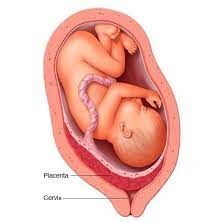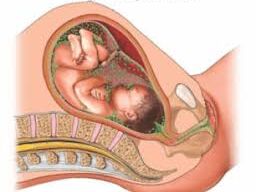Antenatal Care: Ensuring a Healthy Pregnancy Journey
Antenatal is the period between getting pregnant and giving birth to a baby. Antenatal care is a type of preventative healthcare given to pregnant women in order to ensure the health and wellbeing of both mother and baby. It usually begins early in pregnancy and continues throughout the duration. Antenatal care involves regular medical check-ups, including blood tests, urine tests, ultrasounds and other tests, as well as advice from health professionals on topics such as diet, exercise and emotional wellbeing. In addition to these checks and advice, antenatal care also helps identify any potential problems or risks associated with the pregnancy and can provide guidance for how best to manage them. Proper antenatal care can help reduce maternal mortality rates worldwide and ensure that both mother and baby have a safe delivery.
Our Most Common Topics
ABDOMINAL PAIN IN PREGNANCY
Stomach pain, Stomachache, Stomach cramps, Tummy pain, Sore stomach, Wind pain or Belly ache. Abdominal pain is a common medical complaint that can be caused by a wide range of underlying conditions. It is a discomfort or pain that is felt anywhere between the chest and the groin area. Abdominal pain can be acute or chronic, and it can range from a dull ache to a sharp, stabbing sensation. The severity of the pain can depend on the cause of the pain and the individual’s pain tolerance. It can also be accompanied by other symptoms such as nausea, vomiting, diarrhea, or constipation. It is crucial to seek medical attention if the pain is severe or persistent, as it could be a sign of a more significant underlying issue. Click for more information.
ANEMIA

Anemia is a medical condition characterized by a low level of red blood cells or hemoglobin in the body. This condition can be caused by various factors such as poor diet, chronic diseases, blood loss, or genetic disorders. Iron deficiency is one of the leading causes of anemia, as iron is necessary for the production of hemoglobin. Click to find out more.
BEDREST IN PREGNANCY
Bed rest is a form of medical treatment where a patient is advised to remain in bed for an extended period to promote healing, alleviate symptoms, or prevent complications. This treatment is commonly prescribed for various medical conditions such as pregnancy complications, post-surgery recovery, and muscular or skeletal injuries. Bed rest usually entails lying down or sitting up in bed for most of the day with little to no physical activity. The duration of bed rest can vary depending on the condition and the patient’s response to treatment. Although bed rest may seem like a comfortable option, it can also have adverse effects on physical and mental health, such as muscle weakness, bone loss, and depression. Therefore, it is crucial to understand the benefits and risks of bed rest and follow the healthcare provider’s instructions carefully. Click for more information.
BRAXTON HICKS CONTRACTIONS

Braxton Hicks contractions are often referred to as “false labor” due to their similarity to real labor contractions. Braxton Hicks contractions are presented as mild abdominal discomfort in which the body prepares for labor. These contractions are sporadic and irregular, occurring as early as the second trimester but becoming more frequent and noticeable as the pregnancy progresses. Unlike real labor contractions, Braxton Hicks contractions are usually painless and do not lead to cervical dilation. They can be described as a tightening or hardening of the uterus that typically lasts for 20 to 30 seconds. While they can be uncomfortable and alarming, Braxton Hicks contractions are a normal part of pregnancy and serve the purpose of preparing the uterus for labor and delivery. It is important to differentiate between Braxton Hicks contractions and real labor contractions, as the latter signal the onset of labor and require immediate medical attention. Click for more information.
BREECH PRESENTATION
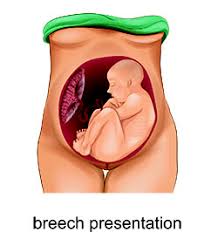
Breech presentation is a type of abnormal labor that occurs when a baby is not in the normal head-down position in the mother’s uterus during delivery. Instead, the baby’s buttocks and/or feet are positioned to enter the birth canal first, with the head of the baby either tilted back or down near its chest. This type of presentation can lead to more complicated childbirth and can even be dangerous for both mother and child if not handled properly. In order to ensure a safe delivery, it is important for doctors to be aware and prepared for breech presentation as soon as it is detected during prenatal ultrasounds or other tests. Regular monitoring throughout pregnancy can help identify potential problems early on, allowing medical professionals to come up with an appropriate plan of action before labor begins. While some cases will require cesarean sections, there are still a number of ways that breech presentations can be managed successfully through medical intervention or alternative methods. Click to find out more.
DANGER SIGNS IN PREGNANCY
Pregnancy can be an exciting time for both the expectant mother and her family, but it is also a time of uncertainty and possible risks. It can also be a time of anxiety and worry, as potential danger signs should not be ignored. Knowing the warning signs of any potential complications can help ensure that a healthy and safe pregnancy is achieved. It is important to be aware of the danger signs in pregnancy, such as bleeding, cramping, and signs of infection, as well as any changes in the baby’s movements and any changes in vision or hearing. It is also important to pay attention to any unusual fatigue or pain or any changes in the mother’s weight or blood pressure. By understanding the warning signs, women can take the necessary steps to ensure their and their baby’s health and safety. Click to find out more.
GESTATIONAL HYPERTENSION
Gestational hypertension, also known as preeclampsia, is a condition that can develop during pregnancy that affects the cardiovascular health and blood pressure of expectant mothers. It is usually detected any time after the 20th week of pregnancy or after delivery. It is estimated that up to 8% of pregnancies in the United States are affected by this condition, making it one of the leading causes of maternal morbidity and mortality. Though symptoms may include headaches, visual disturbances and increased swelling in hands or feet, gestational hypertension can often be asymptomatic until its later stages. If left untreated, this form of hypertension can lead to serious complications for both mother and baby such as low birth weight, premature birth or even death. For this reason, it is important for pregnant women to be aware of the risk factors associated with gestational hypertension, receive regular prenatal care from their healthcare provider and make healthy lifestyle choices throughout their pregnancy. Click for more information.
LA MAZ

Natural ways to help the body relax and cope with labor pains. Welcome to La Maz Exercise! La Maz Exercise is an innovative approach to physical fitness that emphasizes body weight exercises and functional movements to help you reach your fitness goals. This program focuses on developing strength, flexibility, and endurance, as well as improving core stability and overall balance. With La Maz Exercise, the woman is reinforced with natural ways to help the body relax and cope with labor pains. One can build a strong, healthy body that’s ready for any challenge. Click for more information.
MEMBRANE SWEEP
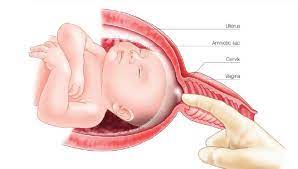
Membrane sweeping is a process used to help induce labor. It involves a doctor or midwife gently separating the amniotic sac from the uterus wall with their finger. This helps to release hormones that can stimulate contractions, leading to the onset of labor. It can be done any time after the 37th week of pregnancy and is relatively safe and painless. While the success rate of membrane sweeping varies, many women find that it provides an effective way to start labor without the need for medical interventions. Click for more information.
MULTIPLE PREGNANCIES
Multiple pregnancy is the occurrence of more than one baby at a time. It can be achieved naturally or through fertility treatments, such as in vitro fertilization (IVF). Multiple pregnancies are much more common today than they have ever been before due to advances in reproductive technology and an increase in fertility treatments. The rate of multiple births has steadily increased since the late 1980s and now accounts for nearly 3% of all live births in the United States. While multiple pregnancies are often associated with joy, they can also bring higher risks than those associated with singleton pregnancies, including an increased chance of preterm labor and delivery, gestational diabetes, preeclampsia, and postpartum hemorrhage. Additionally, mothers carrying multiples may experience intense fatigue and discomfort throughout their pregnancy due to carrying extra weight and hormones that cause more rapid growth of their babies. Despite these risks, many women carrying multiples are able to have successful pregnancies and deliver healthy babies. Click to find out more.
PLACENTAL ABRUPTION

Placental abruption is a serious pregnancy complication in which the placenta partially or completely separates from the uterus before delivery. This separation can disrupt the normal supply of oxygen and nutrients to the baby, potentially leading to a premature delivery and even death. It affects approximately 1 in 150 pregnancies and can cause severe bleeding, low birth weight, premature birth, and even fetal death. The exact cause of placental abruption is unknown, but it is often associated with trauma to the abdomen during pregnancy or a sudden increase in blood pressure. If detected early enough, doctors may be able to treat placental abruption and limit its potential complications. However, if left untreated, placental abruption can lead to severe complications for both mother and baby such as severe maternal hemorrhage, hypovolemic shock (low blood volume), organ damage due to oxygen deprivation, preterm labor or delivery, and even fetal death if the placenta detaches completely from the uterus. Click to find out more.
PLACENTA PREVIA
Placenta Previa is a serious medical condition that affects pregnant women and their unborn children. During pregnancy, the placenta forms a temporary organ for the baby to receive nutrients and oxygen from the mother’s blood circulation. In Placenta Previa, this placenta implants at the lower end of the uterus and covers part or all of the cervix. This can result in severe bleeding during labor, potentially placing both mother and baby in life threatening situations. Other complications associated with Placenta Previa include preterm birth, preterm rupture of membranes, low birth weight and stillbirth. Women who are at risk for developing Placenta Previa should be monitored more closely throughout their pregnancy so that potential problems can be identified and managed appropriately. Click to find out more.
Pregnancy

Pregnancy is a beautiful journey that women experience when they are expecting a baby. During this period, the expectant mother goes through unique physical and emotional changes, as well as other alterations to her lifestyle. Pregnancy lasts an average of 40 weeks, beginning with the first day of the mother’s last menstrual period and ending with childbirth. During this time, the developing baby grows from a single cell to a fully formed newborn – a process that requires significant physical and hormonal changes for both the mother and baby. The expectant mother needs to make sure she gets regular checkups, eat healthy foods, take prenatal vitamins, get plenty of rest, drink plenty of water and avoid any risky activities like smoking or drinking alcohol in order to ensure her baby is born healthy. By taking good care of herself during pregnancy, a woman can set her child up for success in life. Click to find out more.
PREPARING FOR LABOR

Preparing for labor can be an overwhelming experience. It is important to take the time to understand your options and prepare yourself physically, emotionally, and mentally. There are a number of steps that you can take in the months leading up to the due date that will help you feel more confident when it comes time for delivery. Taking prenatal classes offered by hospitals or other healthcare providers is one way to learn about labor and delivery, as well as ask any questions that you may have. Additionally, pregnancy is a good time to adjust your diet and daily routine so that you are getting adequate rest and staying active with appropriate exercise. Finally, discussing any fears or anxieties with your partner or healthcare provider can help provide reassurance and peace of mind throughout the process. With some preparation and education, labor can be a safe, comfortable experience for mothers and their babies alike. Click to find out more.
RH SENSITIZATION
RH Sensitization is a growing problem in areas where humidity can be high and exposure to allergens can be frequent. It occurs when an individual develops an allergic reaction to their environment, typically due to exposure to environmental allergens or other triggers. Common symptoms of RH sensitization include skin irritation, sneezing, coughing, difficulty breathing, rhinitis and asthma-like symptoms. As RH sensitization can lead to serious long-term health problems, it is important for individuals living in these conditions to take preventive measures and get appropriate treatment if necessary. These may include changing the environment by controlling humidity levels and reducing mold growth as well as avoiding contact with known allergy triggers such as animal dander and pollen. In addition, medications or immunotherapy may be prescribed to help reduce the sensitivity of an individual’s immune system to these triggers. It is also important for individuals with RH sensitization to immediately seek medical help when they experience any of the above-mentioned symptoms as early diagnosis and treatment are key in managing this condition. Click to find out more.
RUPTURE OF MEMBRANES

Rupture of membranes (ROM) is a term used to describe when a pregnant woman’s amniotic sac breaks, releasing the amniotic fluid stored inside. This can happen naturally before labor begins or can be induced by a medical professional. ROM is the first stage of labor and delivery, and it signals the beginning of the end of pregnancy. After ROM, labor typically progresses in a predictable way, although there can be variations from one woman to the next. In some cases, ROM can cause complications, so it is important to discuss the risks with a medical professional. Click to find out more.
STAGES OF PREGNANCY
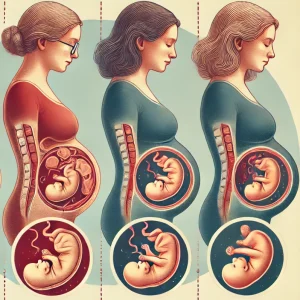
Pregnancy is an amazing journey for any woman and her family. It typically lasts around 40 weeks and is divided into three stages called trimesters: the first trimester, second trimester and third trimester. Each phase of pregnancy brings new experiences and unique challenges, both physically and emotionally. During the first trimester, morning sickness, fatigue and tender breasts are common symptoms while hormone levels continue to rise. The second trimester often brings more energy as nausea decreases and baby grows in size. During this stage, the mother may start feeling her baby move. In the third trimester, it’s normal to experience shortness of breath due to the growing uterus putting pressure on the diaphragm and heart giving the baby less room to move around. As the due date approaches it’s important for mom to be educated on labor signs, so she knows when to go to the hospital or call her health care provider. With proper care throughout all stages of pregnancy, women can look forward to a safe delivery of their bundle of joy! Click to find out more.
TEENAGE PREGNANCY
Pregnancy in any female less than 20 years of age. Teenage pregnancy is a serious and growing concern for many countries around the world. In America, nearly 750,000 adolescents aged 15-19 become pregnant each year, accounting for over 13% of all births in the United States. This number is alarmingly high compared to other industrialized nations, where that percentage drops to a fraction of the US figure. Teen pregnancy can have significant social and economic consequences that can put additional strain on already vulnerable families, with teen mothers facing an increased risk of dropping out of school and living in poverty. Furthermore, babies born to teenage mothers tend to have a higher rate of prematurity and low birth weights. Additionally, teenage pregnancies have been linked to greater risks of health problems for both mother and baby. It is therefore essential that we continue to explore ways to prevent teen pregnancies and support those who are already expecting or parenting. Click to find out more.
The Antenatal Ward
An antenatal ward is a special place dedicated to providing the best possible care for expectant mothers and their unborn babies. Here, mothers-to-be benefit from the expertise of experienced medical staff and are able to receive a range of treatments designed to ensure their health and safety. The ward boasts state-of-the-art equipment and facilities, including ultrasound scanners, and fetal monitoring systems. Women in labor can also find comfort in a dedicated delivery suite with access to epidurals and other pain relief options. Private rooms are available for prenatal consultations, as well as postnatal checkups after the baby is born. The antenatal ward provides compassionate and comprehensive care throughout pregnancy to ensure that both mother and child have the best start in life. Click to find out more.







